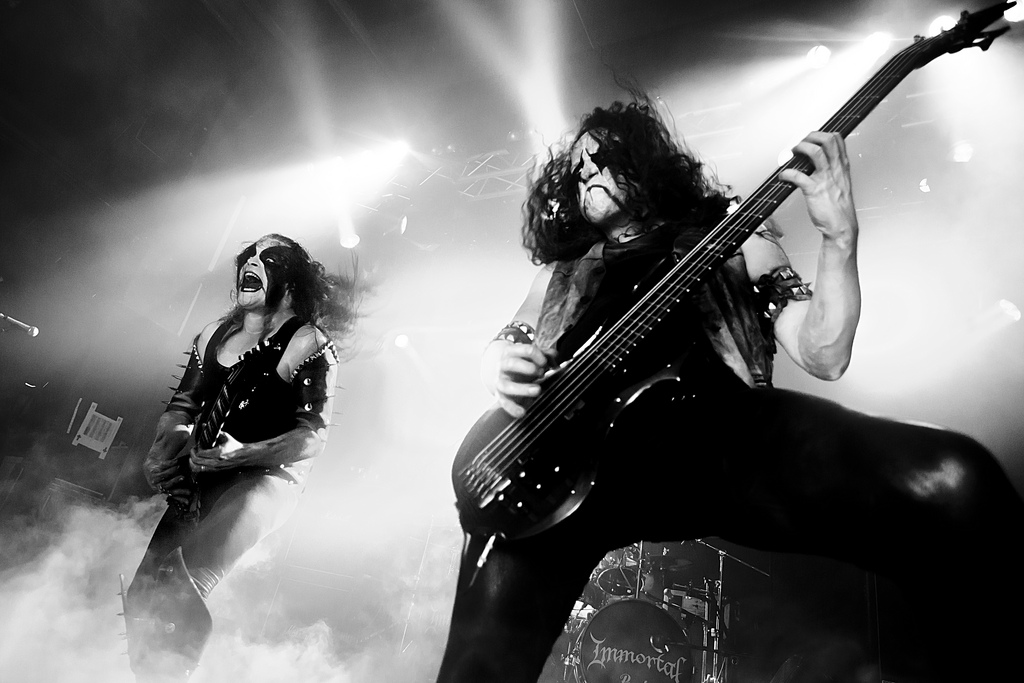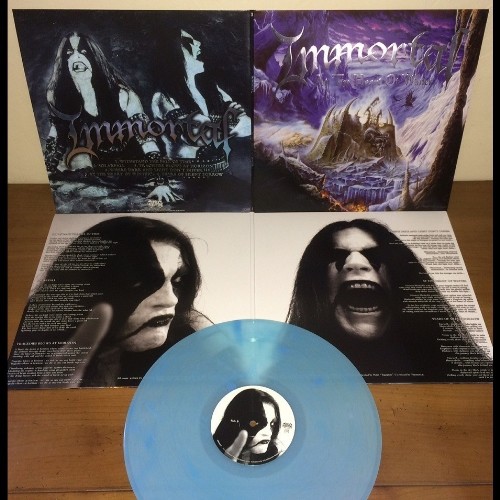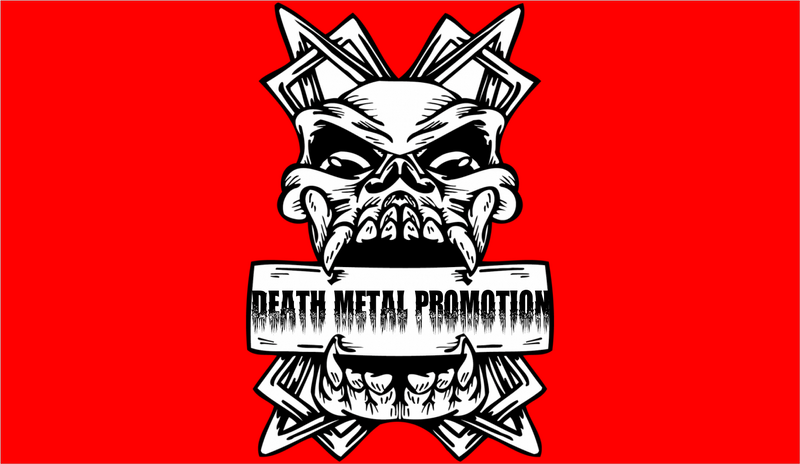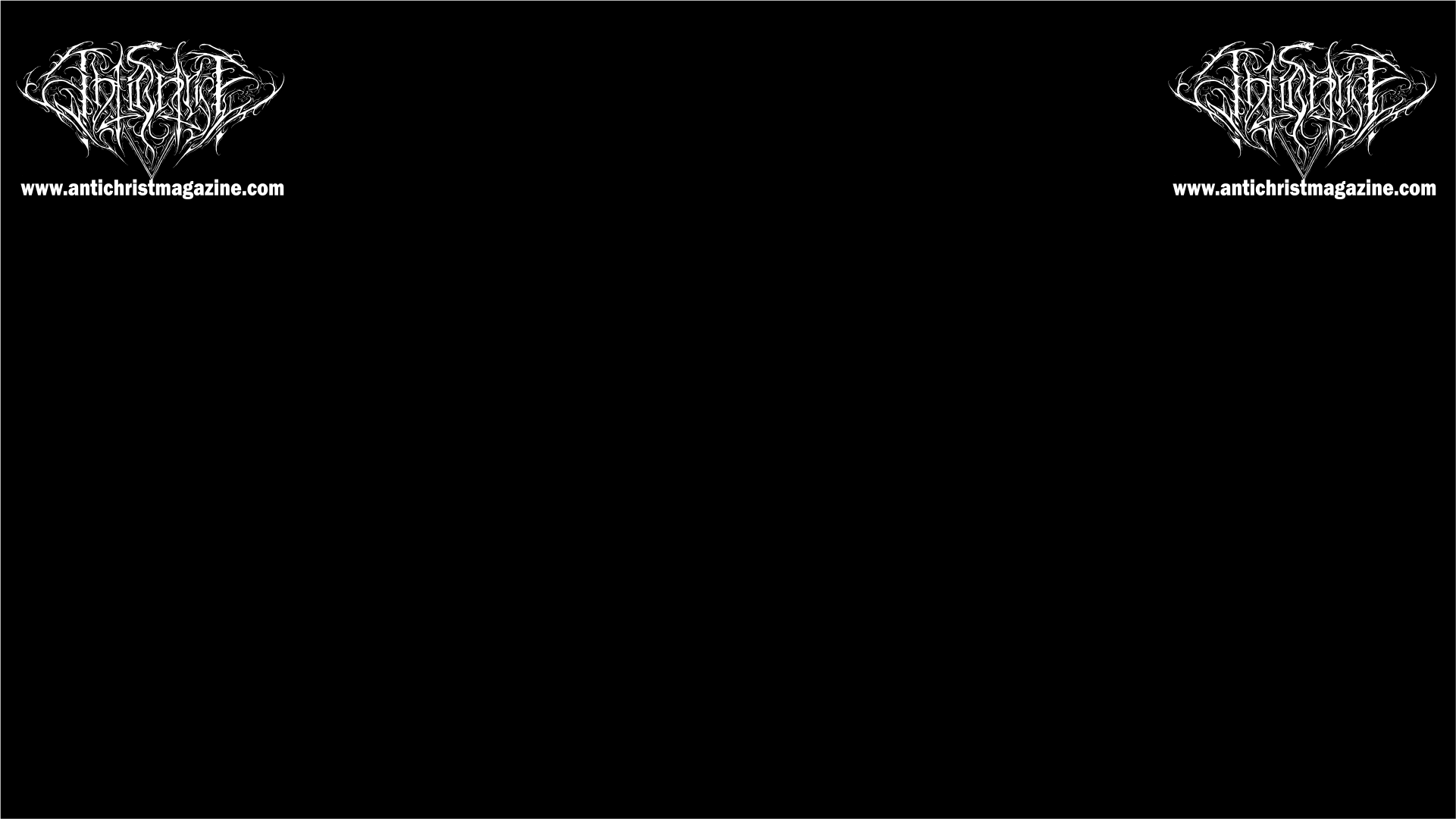| Score 70% | |
|
Summary
Anachronistic epic classic |
%
|
|---|---|
| : 4.7 (3 votes) | |

At the turn of the millennium, Immortal releases this quintessential black metal classic, often considered the band’s most eminent record along with the later ‘Sons of Northern Darkness’ pushing for that spot. What this one here had the other didn’t is it carried an aura of authentic old school black metal rawness with the rustic sound associated with cult black metal greatness. In modern vernacular, this could be referred to as the “OG” in the band’s discography in that sense when compared to “Sons”. It feels distinctly ancient (despite its fairly recent release in 1999) and essential, like it’s completely unbounded and unsullied by contemporary norms from the metal industry.
Looking at what other bands in metal sounded like at that time, it’s obvious Immortal opted for a deliberately organic, nearly archaic feel here. To the point in fact some of the guitar recordings aren’t even properly timed, and for example the soloed guitar riff on ‘Tragedies Blows at Horizon’ sounds just muddled and closer to a demo than an actual studio album production wise.
Heavy thrashy gallops abound, bringing that raw aggressive momentum to the music, along with the band’s signature coarse power chord/tremolo picking combo over blast beats sections (with odd stops within the riff) instilling a sense of erratic chaos into the tracks. In typical Scandinavian fashion the melodic parts are built on chord progressions that borrow from traditional folk music, but adapted to the epic drive of melodic black metal. The sections alternate between blissful wintery melody and harsh chromatic guitar assaults, and there’s real continuity between the contrasting elements in the music as they work together in a complementary way rather than compete for exposure. This being Norwegian black metal, the music is of course dominantly written in the minor scale and the band are slick with introducing an odd chord to the progressions giving the tracks that subversive malevolence in tone. The music will feel stable with harmonious fulfillment before a haunting chord dramatically captures the listener’s attention and drenches the atmosphere in black metal obscurity over the initial sadness.
This is deceivingly complex material, that’s more technical than the average black metal record. It doesn’t necessarily come across as such because the songs are fluid and foster song-writing cohesiveness over flaunting musicianship. Some riffs will catch the listener off guard with sudden accelerations and upped technicality, and there’s a progressive component in the song-writing, as is made obvious with the lengthy track formats: the whole album being a mere 6 songs with none below 6min. Each song also comprises a host of different sections. This isn’t stale redundant epic black metal repeating one or two sections over and over for 8min, the music is dynamic and never takes too long to shift to the next part.
There’s a comprehensive use of the guitar fret-board as the band showcases the full repertoire available to the genre. While a lot of the guitar work focuses on the heavier duties of power chords and rushing tremolo riffs – there’s open chord picking going on occasionally, the riffs are often punctuated by harmonized power chords, and the band will slow the tracks down with a grand theme utilizing anything from full chords or power chords to octave chords – all of this allowing for a bit of breathing space in the mix and for better pacing as well as supplying varying textures to the parts.

The drums are highly energetic and contribute more presence and work rate than on the average black metal album, as over a full song the performances are quite clinical and cover quite a bit ground. The drummer does a lot more than restrict the motor to the riffs to a continuous blast beat session. The bass guitar is well audible and crisp especially on the melodic harmonized riffing as the guitars leave room at the middle of the mix, thus helping the album achieve a fuller sound. A quick word on the vocals, which are quite monotonic and in hindsight quite low in pitch for the genre. That being said they fit this style of more abrasive heads down black metal, as they sound repulsed and too proud to even consider fully committing to the performance, and it would be difficult to imagine the album without that trademark haughty voice tone.
Of course no review of this album should omit a mention of the clean guitars. There’s a cold feel emanating from the clean parts, bringing about a much needed break from the standard kinetic intensity and introducing an interesting contemplative quality to the songs. Those parts also sound so quintessentially black metal. The intro to the title-track ‘At The Heart Of Winter’ shows the band in full ambient mode with a low drony synth bass in the back imposing a solemn atmosphere with soft lead synths playing suspended airy notes guiding the track towards a deeper sorrow, before the climactic detonation of the heavy instrumentation returning with vengeance.

So the production isn’t actually great but as covered it serves the album more than anything else. Overall ‘At the Heart of Winter’ feels like a homage to earlier classic extreme metal precursors from the mid 80’s as it practically sounds anachronistic and not at all with its time. There are plenty of classic hard rock and heavy metal passages with bluesy pentatonic licks, at times directly reminiscent of Iron Maiden both musically and in production, flanger effects etc… hearkening back to the older days and it feels like the album looks backwards rather than forward. Of course many black metal bands sounded that way even at the turn of the century, but Dimmu Borgir (although very different altogether and often considered a commercial band) released ‘Spiritual Black Dimensions’ that year and it simply sounds like two different musical eras. The material here certainly contains contemporary elements and it was innovative in its own way, but it seems its calling is achieving a classic sound set in stone rather than be a part of the changing scene of its time.
Release date: February 22nd, 1999
If you really would like to support Antichrist, you can just Share our article.
You can also support Antichrist by sending a couple bucks to cover some webhosting expenses. =>> PayPal



